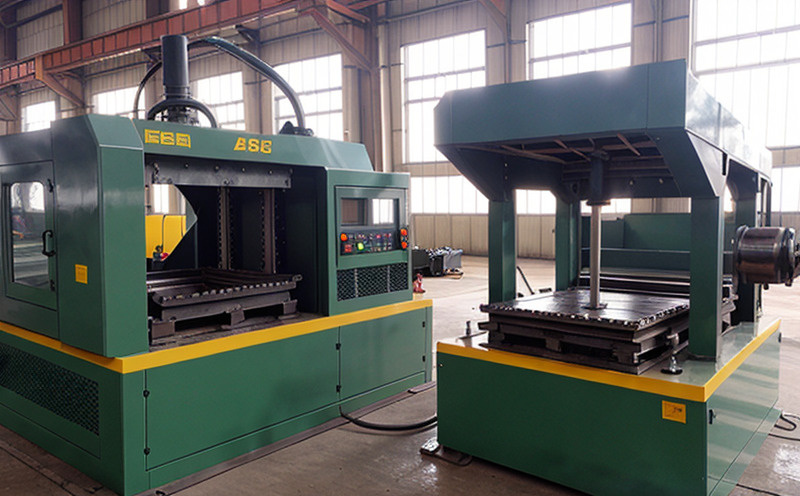DIN 50602 Inclusion Rating Testing in Forged Steels
The DIN 50602 standard is a critical guideline for assessing the quality of steel forgings, particularly focusing on the presence and quantity of inclusions within the material. This standard provides a standardized method to determine the inclusion rating, which is essential for ensuring the mechanical properties and reliability of forged components used in various industrial applications.
Inclusions can significantly impact the performance and longevity of materials used in high-stress environments such as those found in aerospace, automotive manufacturing, and heavy machinery industries. DIN 50602 specifies a precise method to quantify these inclusions by measuring their size, shape, and distribution within the cross-sectional area of the steel sample.
The testing process involves several key steps:
- Sampling: A representative sample is taken from the forgings to be tested. This ensures that the results accurately reflect the overall quality of the batch.
- Preparation: The sample is prepared for analysis, which includes cutting sections and polishing them to a reflective surface.
- Evaluation: Using optical microscopy or scanning electron microscopy (SEM), the inclusions are identified based on their characteristics. The standard defines specific criteria for what constitutes an inclusion and how it should be counted.
- Rating: Based on the evaluation, the inclusion rating is determined according to DIN 50602 criteria. This rating provides a quantitative measure of the acceptability of the forgings in terms of their suitability for further manufacturing or use.
The significance of this testing lies in its role as a quality assurance tool. It helps manufacturers and quality control teams ensure that the materials they produce meet stringent industry standards, thereby reducing the risk of defects and failures in end products.
Compliance with DIN 50602 is particularly important for industries where safety and reliability are paramount. For example, in aerospace applications, even small inclusions can lead to catastrophic failure if not properly detected and addressed during production. Similarly, in automotive manufacturing, ensuring the integrity of forged components is crucial for maintaining performance standards.
The standard also plays a role in facilitating international trade by providing a common benchmark for quality assessment. This ensures that products meet the same high standards regardless of their origin, enhancing trust and reliability across global supply chains.
Applied Standards
DIN 50602 is widely recognized as an essential standard in the industrial manufacturing sector, especially for materials used in critical applications. It specifies a method to quantify inclusions in forged steels through detailed microscopy techniques and rating criteria.
The standard is part of a broader suite of DIN standards that address various aspects of steel quality assurance. These include:
- DIN 50601: General Requirements for Steel
- DIN 4789: Methods for the Determination of Inclusions in Steels
- DIN 50603: Evaluation of Microstructures and Inclusions in Steels
These standards work together to provide a comprehensive framework for ensuring that steel products meet the required quality levels. DIN 50602, specifically, focuses on the microscopic evaluation and quantification of inclusions, which is crucial for maintaining consistent material quality.
Benefits
The implementation of DIN 50602 Inclusion Rating Testing offers numerous benefits to industrial manufacturers and processors. By providing a standardized method for evaluating inclusions in forged steels, this testing ensures that materials meet the highest quality standards required by industry regulations.
- Enhanced Product Quality: The ability to accurately assess the presence of inclusions helps manufacturers produce high-quality products that are reliable and safe for use. This is particularly important in industries where safety and performance are critical, such as aerospace and automotive manufacturing.
- Increased Efficiency: By identifying and addressing issues early in the production process, DIN 50602 testing helps reduce rework and waste, thereby increasing overall efficiency. This can lead to significant cost savings for manufacturers.
- Better Decision-Making: The quantitative data provided by this testing allows for more informed decision-making regarding material selection and process optimization. This ensures that the right materials are used in the right applications, leading to better end-product performance.
- Enhanced Customer Trust: Compliance with international standards like DIN 50602 builds trust with customers by demonstrating a commitment to quality and safety. This can lead to stronger customer relationships and increased market share.
In conclusion, DIN 50602 Inclusion Rating Testing is an indispensable tool for industrial manufacturers looking to ensure the highest standards of material quality and reliability in their products.
Environmental and Sustainability Contributions
The application of DIN 50602 testing in forged steel can contribute positively to environmental sustainability by promoting the use of high-quality materials that are less prone to failure. This, in turn, reduces the need for frequent replacements or repairs, which can lead to lower waste generation and resource consumption.
By ensuring that only high-quality steels with acceptable inclusion ratings are used in manufacturing processes, DIN 50602 helps reduce the environmental impact of industrial operations. For example, in aerospace applications, where lightweight materials are crucial for fuel efficiency, using forged steels that meet these standards can help minimize carbon emissions.
Furthermore, the precise quality control provided by this testing ensures that resources are used efficiently, reducing wastage and minimizing the environmental footprint associated with manufacturing processes. This aligns with broader sustainability goals in the industrial sector, promoting responsible resource management and environmental stewardship.





